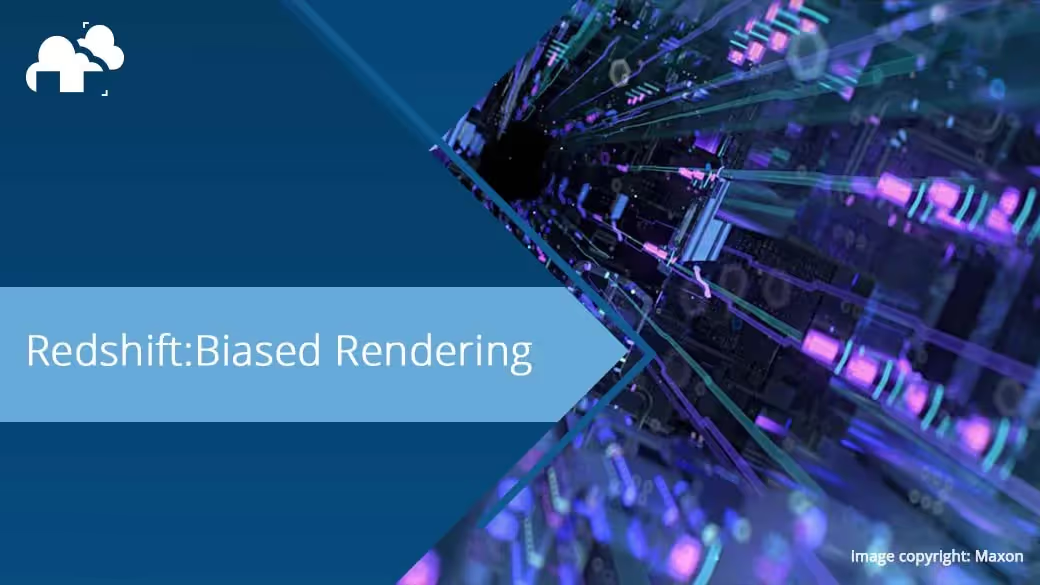
Redshift, a prominent render engine in the 3D graphics realm, leverages biased rendering techniques to optimize rendering speeds while maintaining high-quality visual output. This balance is achieved through various sophisticated methods that enhance efficiency and realism in rendered scenes. Combined with the power of a Redshift Render Farm, users can deliver high quality projects without compromising their artistic direction. Here’s a closer look at the specific techniques Redshift employs and the advantages of using a biased renderer like Redshift.
Redshift utilizes a variety of biased rendering methods to accelerate the rendering process while maintaining visual fidelity. These techniques include:
These biased rendering techniques are fully GPU accelerated, ensuring that Redshift can deliver rapid render times without sacrificing the quality of the final output.
Redshift's biased approach offers significant benefits:
Redshift's approach to selective detail allows artists to optimize render times effectively by focusing computational resources on the most crucial parts of the scene. This capability not only enhances efficiency but also ensures that the highest level of detail is preserved where it matters most. Here’s how Redshift facilitates selective detailing through its various features:
Redshift provides the option to override Sub-Surface Scattering (SSS) effects across the scene, offering a choice between Ray-Traced and Point-Based SSS. Each method has its strengths; Ray-Traced SSS provides more accurate and realistic results, especially in scenes with complex lighting, while Point-Based SSS can be faster and more efficient, especially in less critical areas of the scene. This flexibility allows artists to decide the best approach for each project, balancing between quality and rendering speed.
With Redshift, artists can enhance surfaces using displacement mapping techniques that include height, vector textures, or procedural shading nodes. This feature adds significant geometric and lighting detail to surfaces, contributing to the overall realism of the scene without overburdening the render times for less noticeable areas.
Redshift’s advanced optimization settings offer granular control over how the renderer processes the scene. For instance, artists can adjust the cut-off thresholds for Sub-Surface Scattering, which helps in managing the rendering load for SSS effects. Additionally, features like Russian Roulette Ray Tracing Acceleration can be utilized to speed up the rendering process by intelligently terminating less significant light paths.
Control over geometry loading in Redshift is another aspect that contributes to its efficient rendering. By managing when and how geometry data is loaded and processed, Redshift can optimize performance. In certain scenarios, processing all geometry before starting the render can lead to better performance, reducing the overall time taken to complete the render.
Redshift optimizes texture mapping by selecting appropriate MIP-maps based on the distance of the textured object from the camera, filtering between two consecutive MIP levels. This method ensures that texture details are preserved in close-up objects while optimizing the texture quality for distant elements, maintaining visual fidelity without unnecessary computational expense.
By providing these detailed control mechanisms, Redshift enables artists to concentrate on refining the details that significantly impact the scene's visual quality. This not only leads to potential savings in render time but also allows for a more efficient and targeted rendering process, ensuring that resources are allocated where they have the most visual impact.
Redshift’s approach to biased rendering demonstrates a successful balance between rendering speed and visual realism. It provides a practical solution for 3D artists and studios needing high-quality renders within tight deadlines. With its array of biased rendering techniques, Redshift empowers users to achieve efficiency and visual excellence, making it a top choice in the 3D rendering landscape. Through its blend of speed, control, and photorealistic output, Redshift continues to be a pivotal tool in the production of stunning 3D visuals.